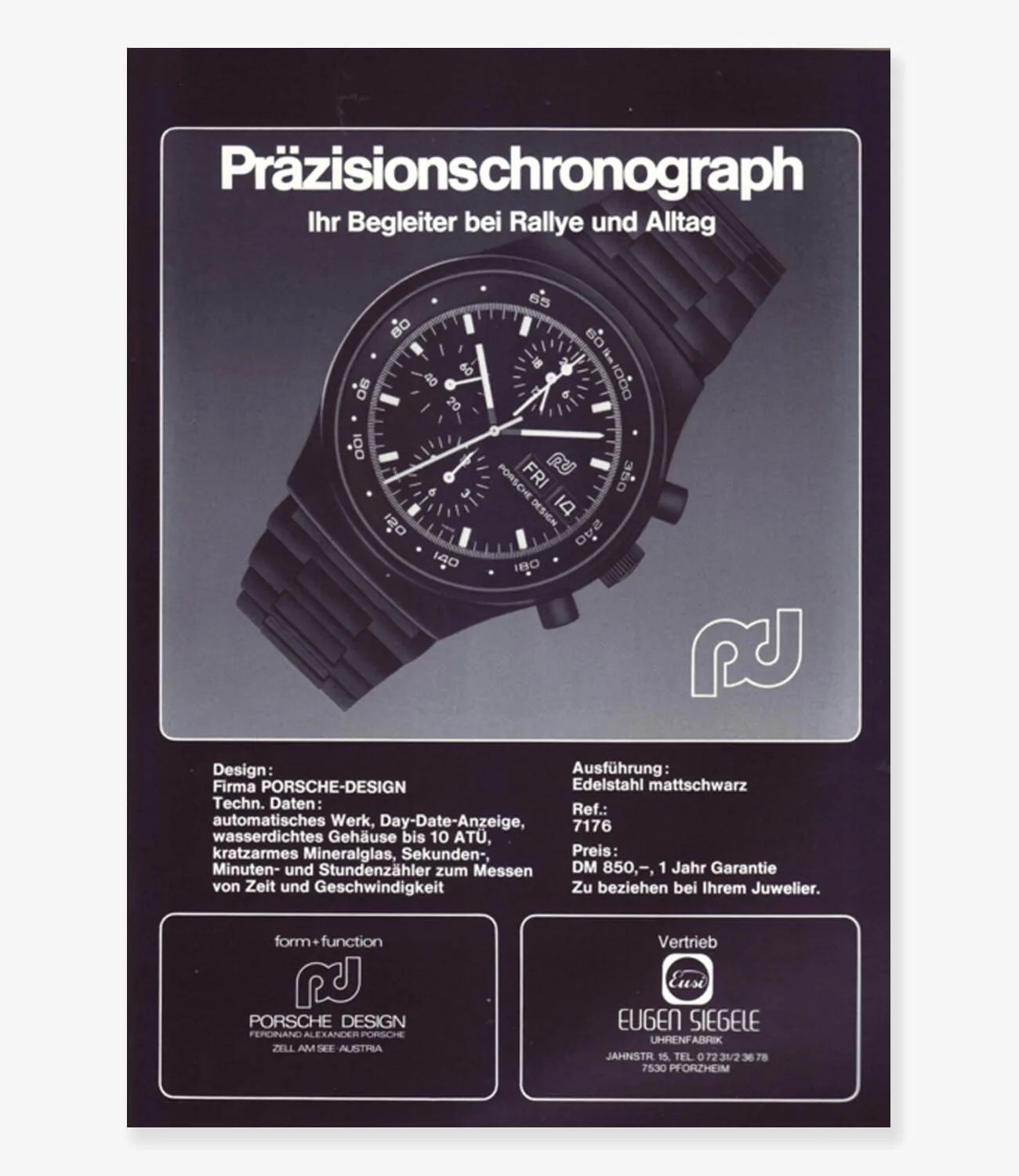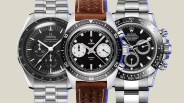Welcome to Watches You Should Know, a biweekly column highlighting important or little-known watches with interesting backstories and unexpected influence. This week: the Porsche Design Chronograph 1.
“Blacked-out” this, “tactical” that…Look around today’s watch landscape and it’s hard to imagine a time when there was no such thing as an all-black watch. Maybe the idea existed before the 1970s, but it took the confluence of two forces to make it a reality: one was the necessary technology, and the other was the design brilliance of none other than the man who created the famous Porsche 911. Once Ferdinand Alexander Porsche released his Chronograph 1 upon the world in 1972, the black watch was here to stay.
It’s the color (or lack thereof?) that goes with everything, after all, and it can certainly have a compellingly serious, masculine vibe. Like so many other great inventions and innovations, it looks in retrospect like an obvious choice for watches. The Porsche Design Chronograph 1, however, is important and compelling for reasons beyond its color.
More Watches You Should Know
• Enicar Sherpa Guide
• Angelus Chronodato
• Fiyta Spacemaster
Its connection to the most famous car of one of the most prominent automakers is no contrived co-branding exercise, as so many other watches are. Ferdinand Alexander Porsche (you may call him “Butzi” or F.A.), grandson of the german car maker’s founder, designed the iconic Porsche 911 (among others), which was introduced in 1964. When he left the company and founded his own design firm in 1972, however, his first product was a watch: the Chronograph 1.
With its sharp, austere and functional design, it looks modern even today. F.A. Porsche had been an industrial design student at the Hochschule für Gestaltung Ulm school founded by none other than Bauhaus hero Max Bill. You can see the school’s influence in its purposefully monochromatic dial enlivened with a shock of red from the bold seconds hand.
There’s little debate that black simply “looks cool,” but legend has it that the idea behind the watch was twofold: one was to match the 911, and the other was based on pure functionality. It’s said that Porsche cited the legibility of gauges found in cars and planes with their white-on-black designs — they remain easy to read but don’t distract or blind the user with bright colors.


